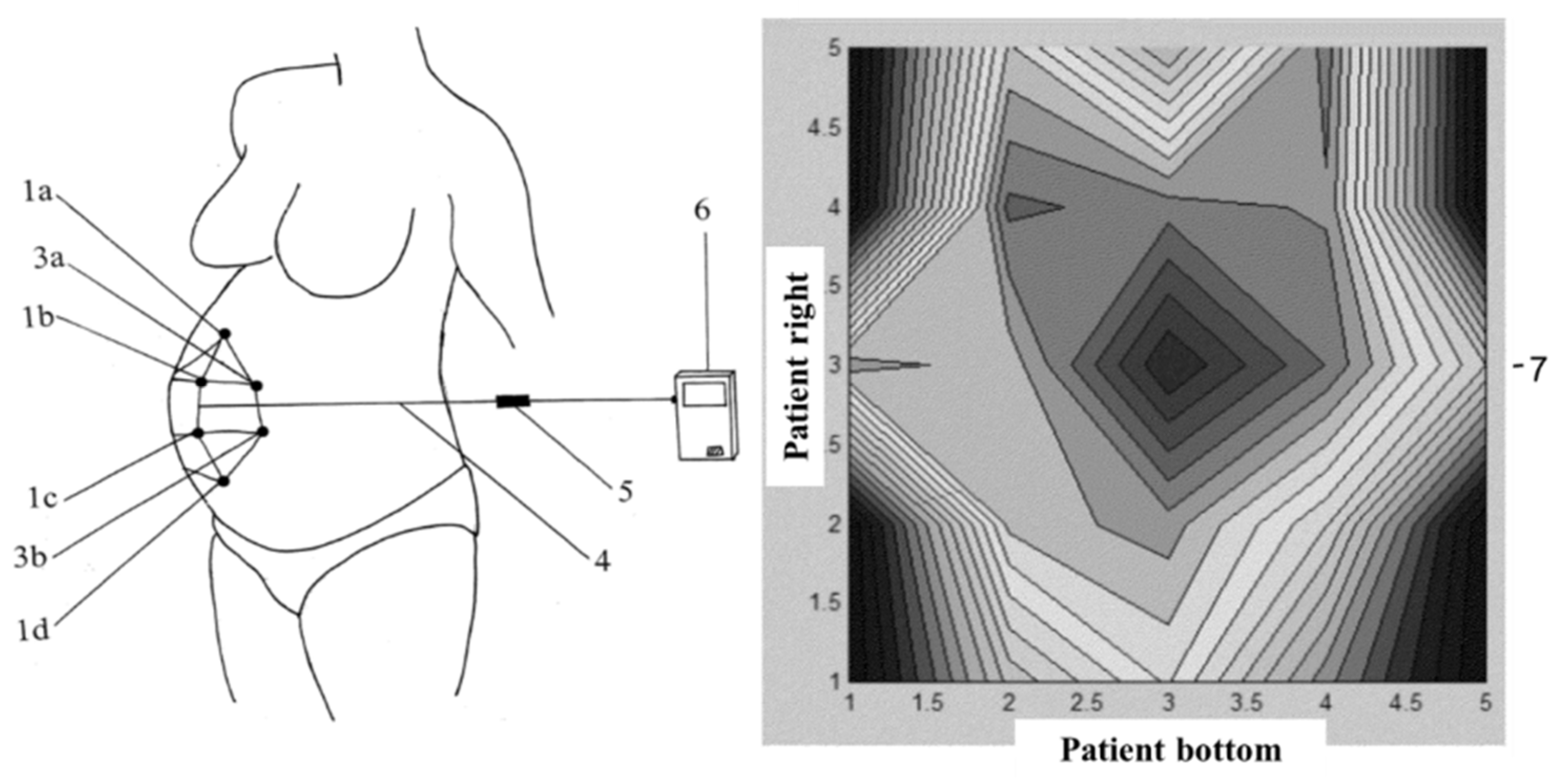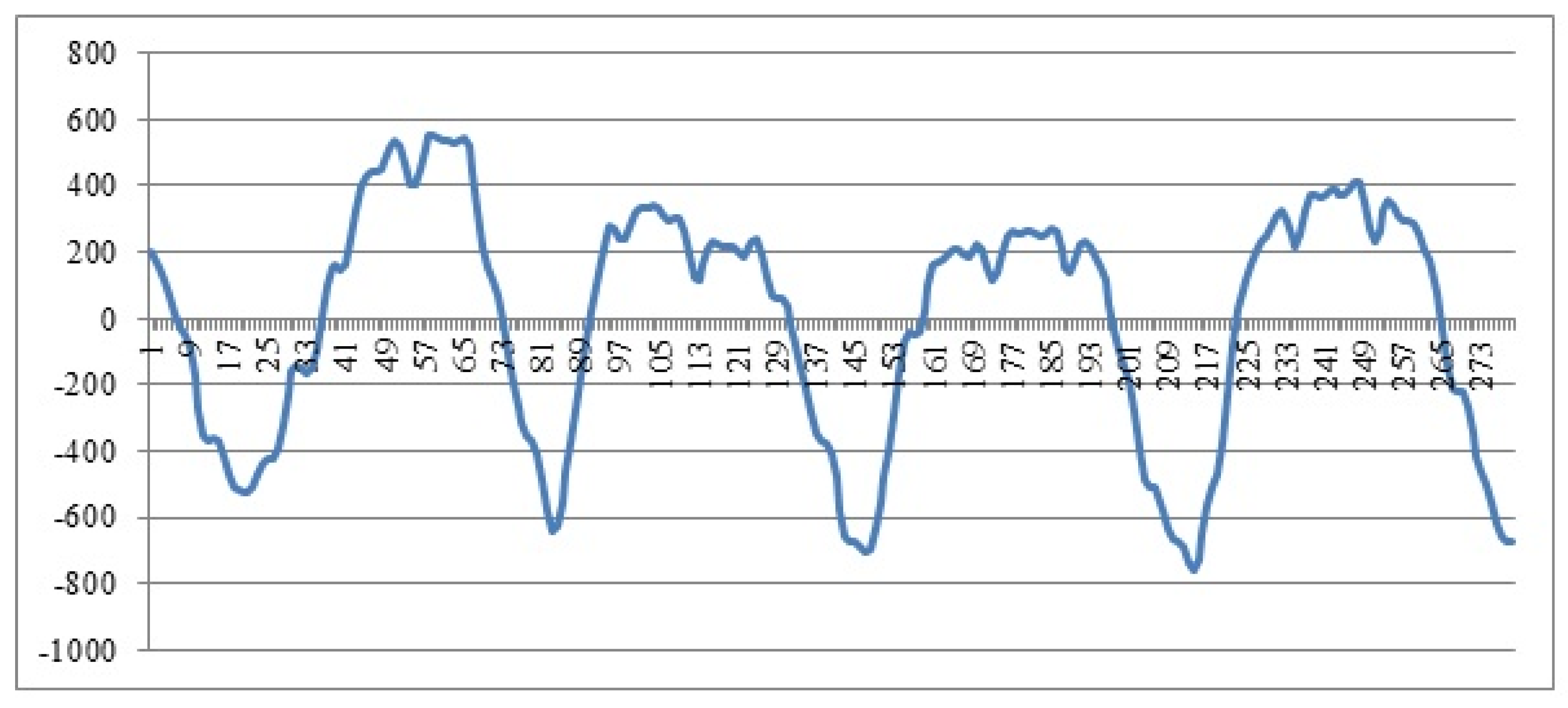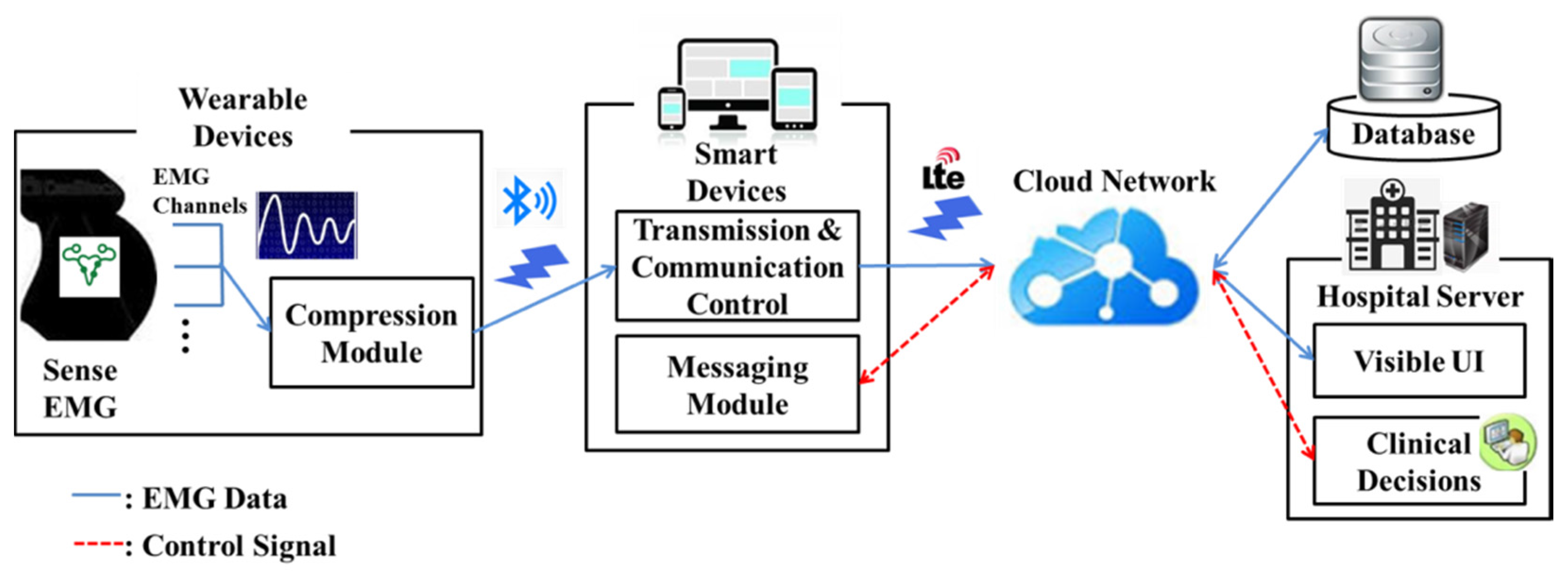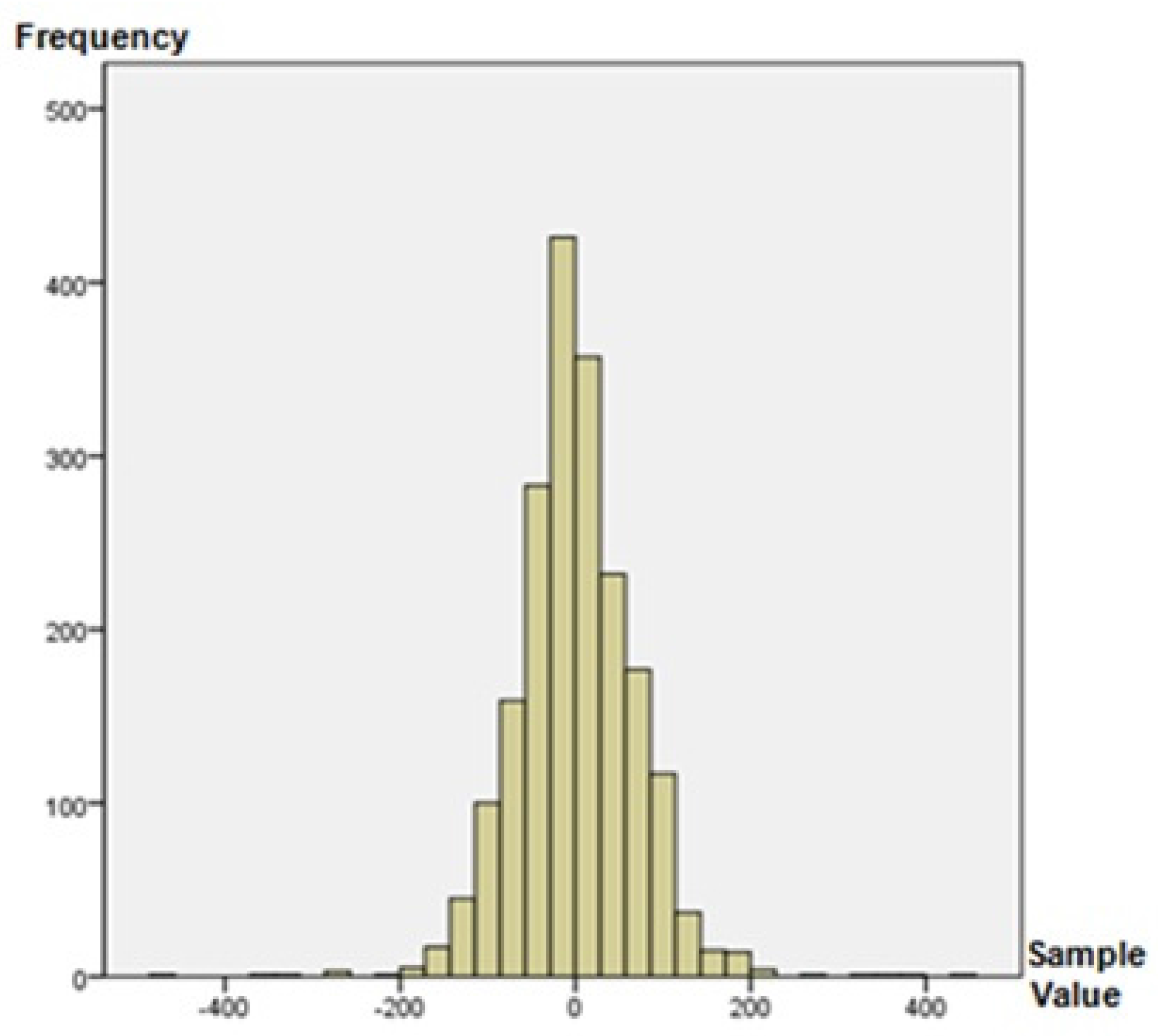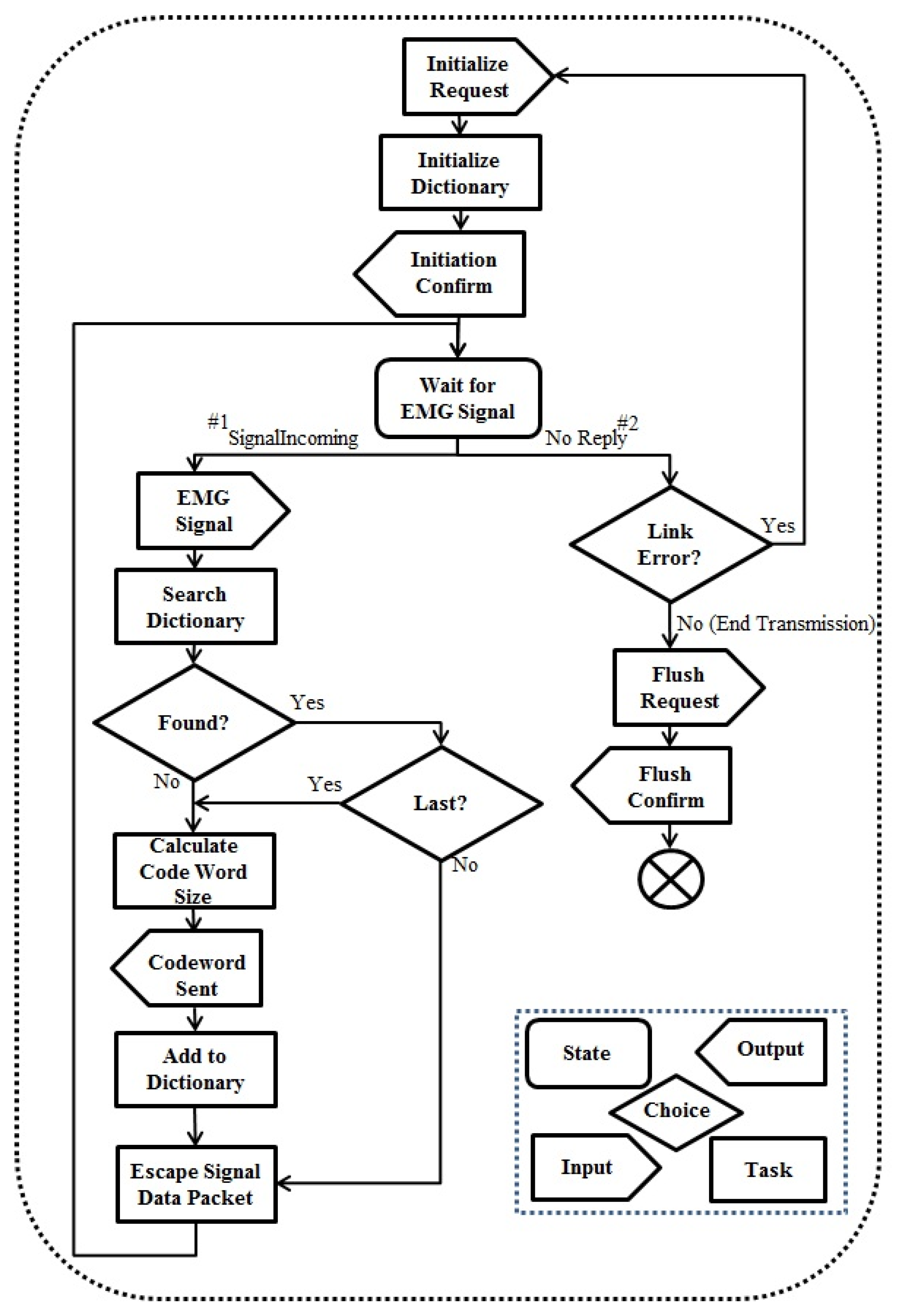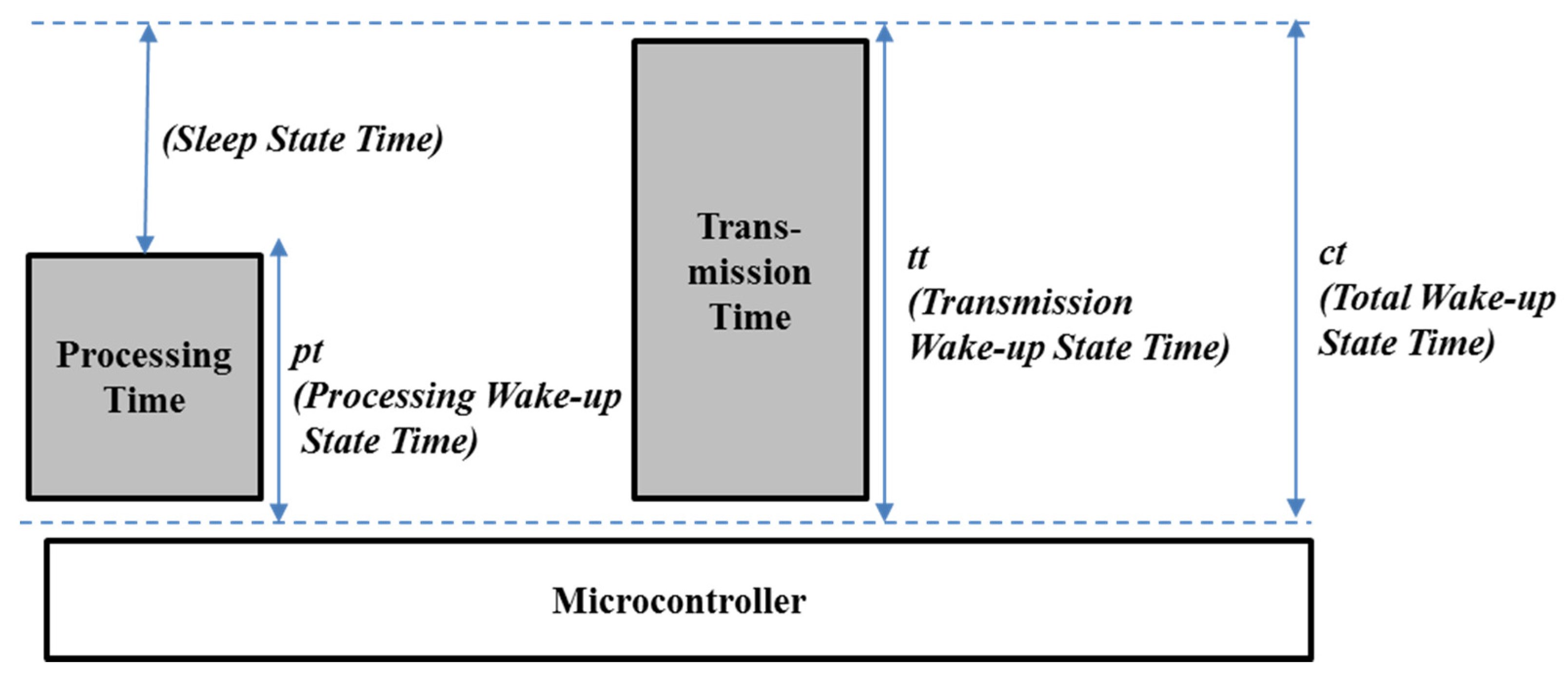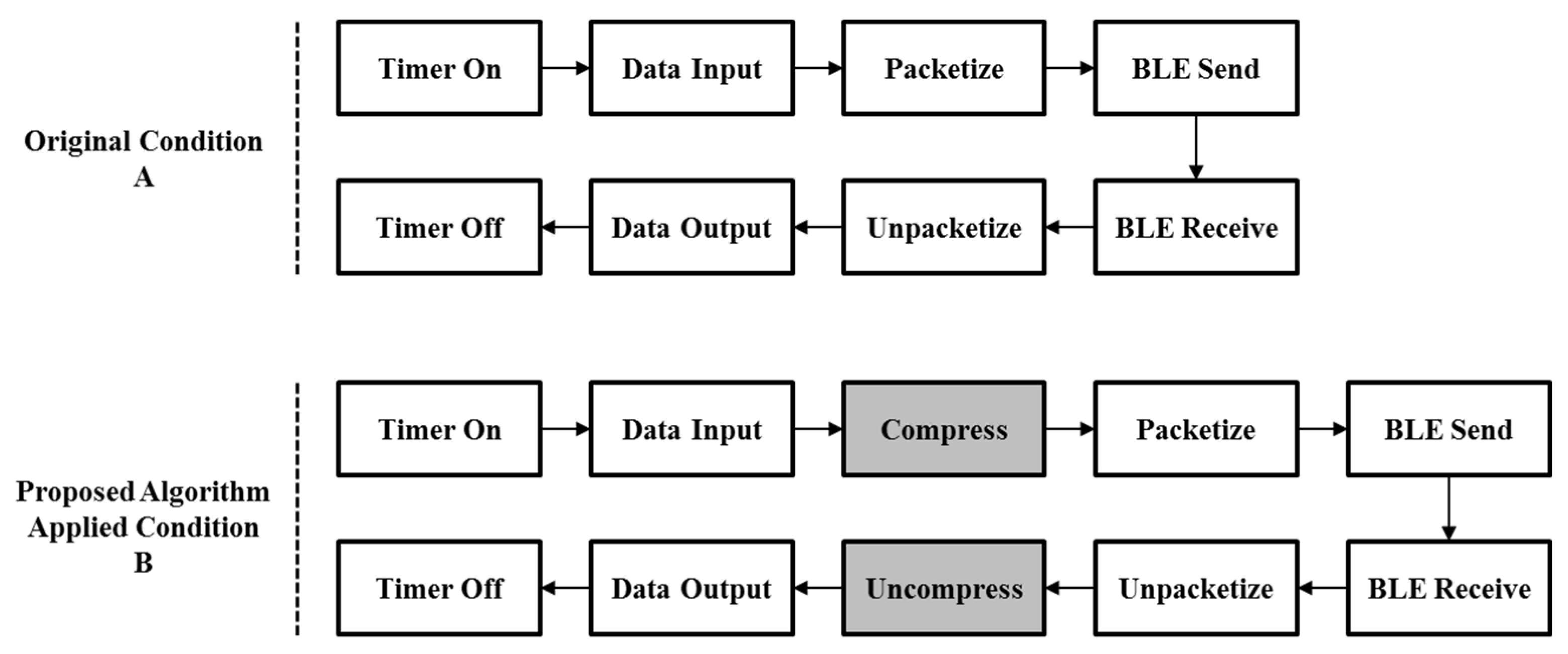4.1. Materials and Methods
EMG data samples were obtained from the Physionet PhysioBank database [
27]. Among the signal databases provided by Physionet, the Term-Preterm EHG Database (TPEHG DB,) was used. According to Physionet, the data were obtained at the Department of Obstetrics and Gynecology of the University Medical Centre, Ljubljana.
The TPEHG DB contains 300 uterine EMG records from 300 pregnant women. Each record consisted of 12 EMG channels, and the sampling frequency was 20 Hz (sampling interval of 0.05 s). In this evaluation, 30 records were randomly chosen for evaluation, each with a length of 2000 samples. As mentioned in
Section 3.2, each sample had a resolution of 32 bits.
Solution performance comparisons were conducted for widely used algorithms (LZW, Huffman), and then for related researches. Statistical analysis was conducted using SPSS ver. 23 (IBM, New York, NY, USA). The C programming language was used for algorithm programming, development, and evaluation, with Microsoft Visual Studio 2016 (Microsoft, New York, NY, USA).
4.2. Compression Ratio Results
To evaluate the compression performance of the proposed algorithm, the LZW [
28,
29] and Huffman [
30] algorithms, the most widely used compression algorithms, were first used for comparison. The compression ratio (
CR) was calculated using the following Equation (1), where
US is the uncompressed size and
CS is the compressed size:
A comparison of the
CR with those of other widely used algorithms is shown in
Table 5. LZW and Huffman showed
CRs of 1.87 and 1.90, respectively, compared to 3.61 for the proposed algorithm, thus exhibiting a significant difference. Therefore, the proposed algorithm yielded a more efficient compression.
For a further subjective evaluation of the performance of the proposed algorithm, a comparison with prior studies was conducted. Few studies of lossless compression of EMG signals of maternal subjects are extant, but recent researches similar to this study were used. Note that the percentage residual difference (
PRD) is calculated according to Equation (2).
In Equation (2),
x is the uncompressed original signal and
is the reconstructed signal after compression. In addition,
K is the total sample length of the signal. For instance, the length of
K is 2000 in the proposed experiment. A comparison of the
PRD and
CR of the proposed algorithm and previous researches is shown in
Table 6.
For an objective comparison, a CR under similar circumstances to PRD was compared, because the proposed algorithm was lossy (PRD of 0). The lower the PRD, the lower the loss rate. Balouchestani reported a CR of 2.00, and Itiki a CR of 1.69. Norris, Berger, Filho, and Trabuco reported CRs of 3.33, but different PRD values. The PRD values of Norris, Berger, Filho, and Trabuco were 3.90, 1.79, 1.21, and 2.12, respectively.
The proposed algorithm was more efficient (CR, 3.61) than those in previous studies. Additionally, Balouchestani, Norris, Berger, Filho, and Trabuco had markedly higher PRD values than the proposed algorithm. Although not proposed in their research, their compression performances will be far lower in close-to-zero PRD situations.
4.3. Execution Time Difference Results
Basically, microcontrollers are in a ‘wake-up’ state when processing or transmitting data, and are in a ‘sleep’ state when not. The duration of time during which the microcontroller is in a ‘wake-up’ state is when it consumes its battery.
The algorithm contributes to reducing the battery consumption by reducing the packet size of transmitted data, because the transmitting data time is reduced. However, battery consumption not only depends on the transmission time (transmission time needed per packet,
tt), but also on the processor load (processing time needed per packet,
pt). The higher the processor load, the higher the consumption, because the processing time (wake-up time) is increased. Since the algorithm increases the processor load, there is some trade-off between transmission time and processing time. Therefore, an assessment of the complex algorithm’s contribution to the overall effect in computing time (total computing operations time per packet,
ct) is needed, and is thus evaluated in this section. The relation between
pt, tt, and
ct follows Equation (3), and is shown in an example situation in
Figure 7.
Two conditions A and B must be compared for an evaluation of the algorithm’s effect on
ct. A is the time per packet needed to process and transmit data packets using the original system, and B is the time per packet needed to process and transmit data packets using the algorithm that is applied to the original system. The specific steps used to assess A and B are depicted in
Figure 8.
To assess the
ct of A, first set the timer on, input the EMG data, packetize for transmission, transmit the data packets, unpacketize the data, output the EMG data, and set the timer off. On the other hand, to assess the
ct of B, also set the timer on, input the EMG data, compress the data using EUMTS, packetize for transmission, transmit the data packets, unpacketize the data, uncompress the data using an EUMTS decoder, output the EMG data, and set the timer off. Note that the packet size used in this experiment is 20 samples, because Bluetooth usually sends one packet per second, and because the database used here is 20 Hz. Results of the A and B time comparison in milliseconds are shown in
Table 7.
The processor used for evaluation was a recent updated version of microcontroller 8051 that is suitable for wearable operating systems. The network environment was Bluetooth 4.2 Low Energy. Using the database mentioned in
Section 4.1, 12 channels of EMG data containing 1000 packets (20,000 samples) in each channel were used in this experiment (size approximately 2 MB).
The results showed that, naturally, the complexity of the proposed algorithm increased the processing time needed per packet from 2.0 ms to 870.0 ms (pt). However, EUMTS contributed to the largely decreasing transmission time needed per packet from 2340.6 ms to 648.4 ms, by efficiently compressing the data packet size (tt). In conclusion, in spite of a trade-off between the processing time and transmission time, the overall computation time decreased from 2340.6 ms to 870.0 ms (ct), thereby contributing to reducing the battery consumption of microcontrollers. In other words, by using the proposed algorithm, the total wake-up state needed in order to process and transmit data decreased for the 8051 microcontroller.
